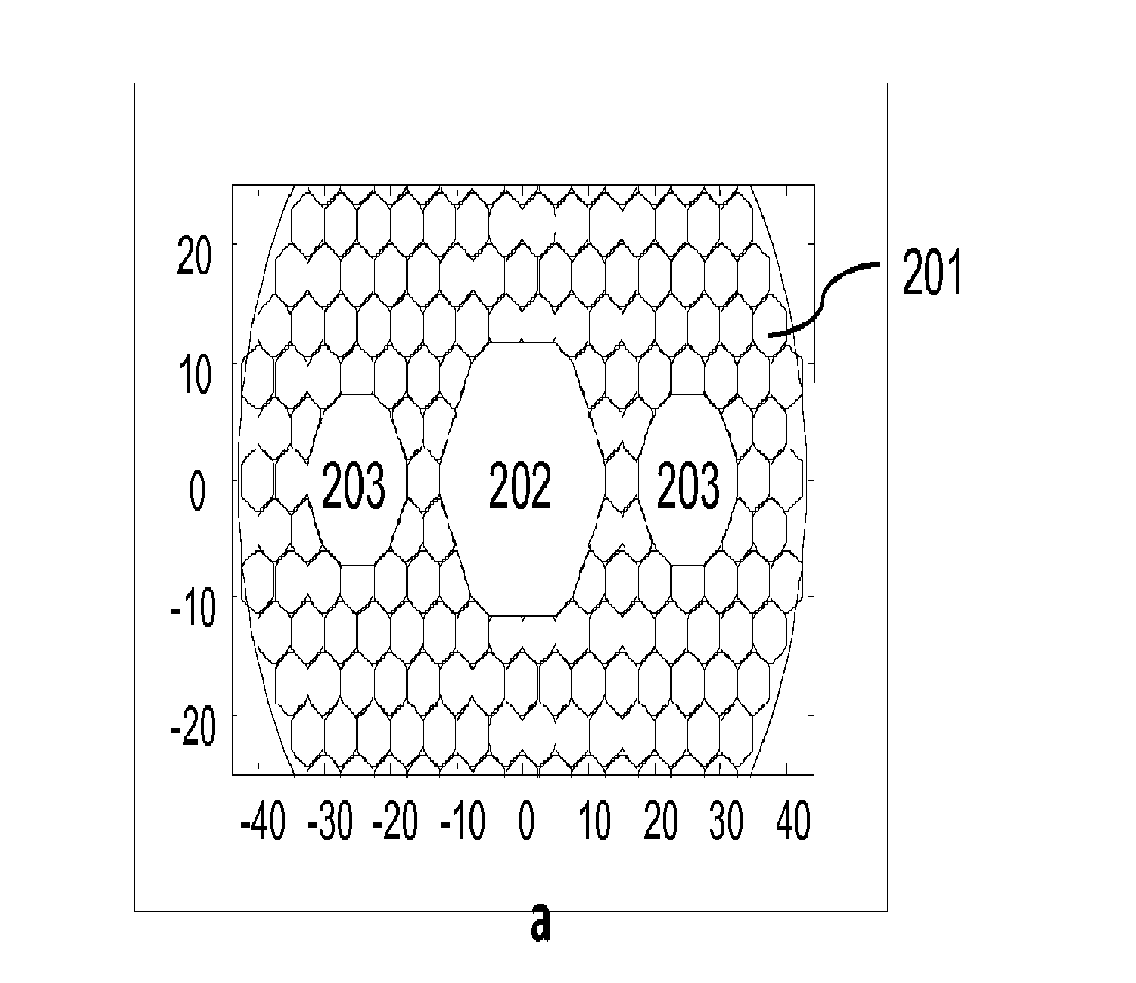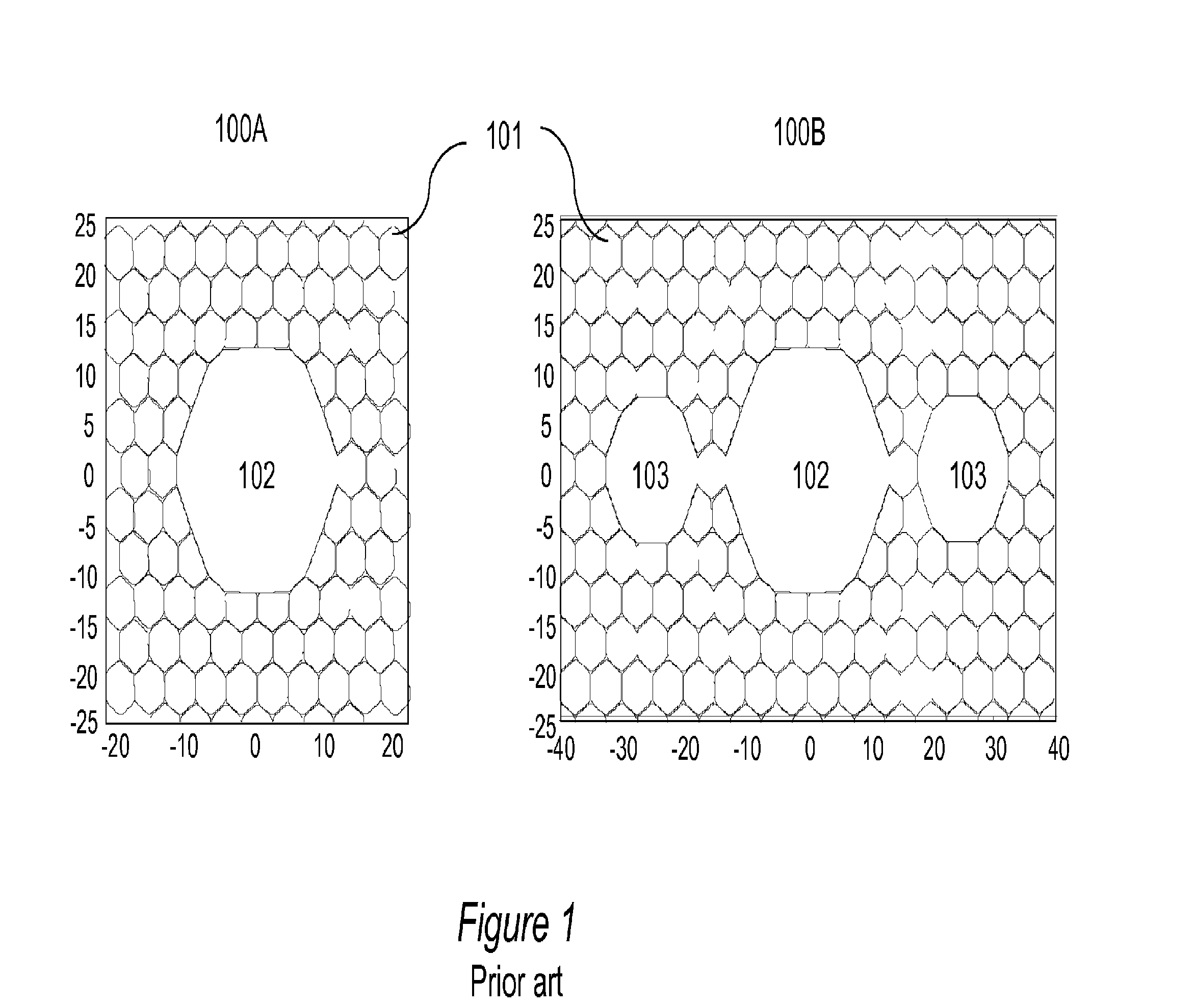Shunt fiber
a fiber and optical fiber technology, applied in the field of optical fiber, can solve the problems of negligible coupling of signal modes over the total length of fiber, substantial index-mismatch, etc., and achieve the effect of effectively functioning or operating as a single mode, suppressing the unwanted mode or mode effectively, and increasing the loss
- Summary
- Abstract
- Description
- Claims
- Application Information
AI Technical Summary
Benefits of technology
Problems solved by technology
Method used
Image
Examples
example a
37-Cell Core and 7-Cell Shunts
[0084]In an exemplary embodiment shown in FIG. 6, a 37-cell core, and 7-cell shunt fiber geometry is selected. More specifically, the fiber geometry shown in FIG. 6a comprises an array of lattice cells or lattice holes 601 with a lattice hole spacing of about 5.2 μm, providing a bandgap and low-loss guiding around 1550 nm. An air-fill-fraction in the lattice hole is about 95.5%. A central core region 602 is created by removing 37 lattice cells in the center in a “4-5-6-7-6-5-4” arrangement (37-cells core) and each of two shunts 603 (only one shown for clarity) has a 7-cell shape (7-cell shunt). The core-web thicknesses are adjusted to obtain a relatively surface-mode-free region in the calculation.
[0085]Results of effective index as a function of wavelength from simulation with a small amount of perturbations are plotted in the graphs shown in FIGS. 6b and 6c, respectively. In the effective index plots shown in FIGS. 6b and 6c, the fundamental modes 611...
example b
19-Cell Core and 7-Cell Shunts
[0090]Shown in FIG. 7 are simulation results for an inventivefiber. The fiber geometry shown in FIG. 7a comprises an array of lattice cells or lattice holes 701 including a 19-cell core 702 and two 7-cell shunts 703 located symmetrically on either side of the core. The calculation assumes an idealized core and shunt geometry with a lattice hole spacing of about 4.9 μm, and an air-fill fraction of 95.5%. The simulation takes into account slight distortions from ideal circular shape for the core that may result in some surface modes. The simulation model also accounts for an index mismatch variation equivalent to a perturbation Δnpert=0.0007, that would result from a 7 cm bend diameter. As shown in FIG. 7b, shaded regions 714 (only one labeled) show perturbed shunt mode effective indices, and each shaded region surround a solid line 713 indicating the corresponding unperturbed shunt mode effective index.
[0091]The core and shunt sizes are selected such tha...
PUM
 Login to View More
Login to View More Abstract
Description
Claims
Application Information
 Login to View More
Login to View More - R&D
- Intellectual Property
- Life Sciences
- Materials
- Tech Scout
- Unparalleled Data Quality
- Higher Quality Content
- 60% Fewer Hallucinations
Browse by: Latest US Patents, China's latest patents, Technical Efficacy Thesaurus, Application Domain, Technology Topic, Popular Technical Reports.
© 2025 PatSnap. All rights reserved.Legal|Privacy policy|Modern Slavery Act Transparency Statement|Sitemap|About US| Contact US: help@patsnap.com



